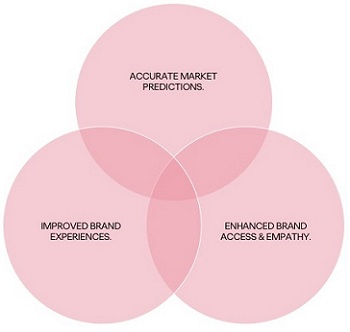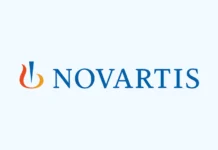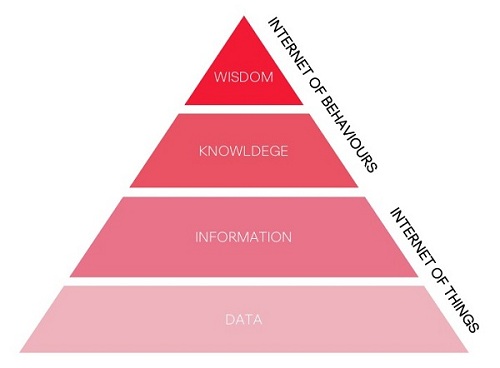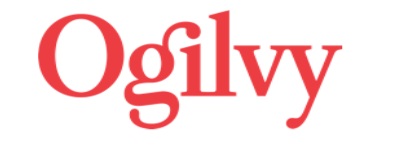The Internet of Things (IoT) has been the topic of discussion for many years in the technology and data circles. However, the Internet cannot exist without people and what they do with it. This has led to a line of thinking which marries data and people’s behaviour to arrive at richer and more fruitful experiences for both brands and end-consumers.
On a cold November day in 1989, Tim Berners-Lee achieved the first communication between a HTTP client & server, via the internet. And the World Wide Web was born. The invention of the World Wide Web and web browsers upgraded the internet. Instead of being islands of information, the files or data on the internet became connected and more accessible to all. Today, the World Wide Web has transformed everything from finance, to travel, to entertainment, to education. But the most significant change has occurred in healthcare.
The Internet is changing us.
The internet has led to many changes in how people act, think and behave, especially with respect to their health and well-being.
We are more informed: Earlier there was limited access to information, especially about healthcare. The practice of medicine and interactions with the doctor were pedantic in nature. With the World Wide Web, a floodgate of information has opened up. Everyone, especially patients and caregivers, now have immediate access to information about health conditions, doctors, medicines and treatments.
We are more demanding: The immediate effect of more information is empowered patients who demand more. They are now able to evaluate comparative health offerings as well as doctors and are expressing their intention to participate in health decisions too.
We are more connected: Through social media, and other platforms, patients and caregivers are now connecting and discussing health-related topics. Online doctor-consultation and peer-to-peer interactions through technology is helping in always-on disease management as well. Answers to questions that they never asked, or did not feel comfortable asking, are now available freely.
We are changing: The way people shop is changing. A lot of wellness related purchases, as well as pharmaceutical purchases are taking place online. Pharmacies, once considered essentially terrestrial in nature, are seeing a digital transformation. The act of whipping out a smartphone to compare and get the best deals, is now also present in at pharmacies.
We are generating a lot of data: The total amount of data generated by traditional & cloud data centres, enterprise infrastructure like cell towers and branch offices as well as end-points like PCs, smart phones and IoT devices is called the Global Datasphere. According to IDC the Global Datasphere will reach 175 Zettabytes by 2025. (One zettabyte is equal to One trillion Gigabytes).
In addition to that, the more connected we become, the greater our need to know about health-related topics (to some extent also fuelled by the Covid-19 Pandemic). It is not surprised then that Google receives more than a billion health-related searches each day.
So the question is, what do we do with this changed human behaviour and the zettabytes of data and human actions generated on the internet?
Internet of Things vs the Internet of Behaviours.
The Internet of Things (IoT) was coined by Kevin Aston in 1999. It is a concept that describes physical objects embedded with sensors, processing abilities, software and other technologies so that they may connect and exchange data with other objects and systems over the internet or any other communication networks.
In simple words, IoT is about data exchange through connected devices that can ‘talk’ to each other.
However, most of us tend to think of the internet as an aggregate of technologies, assembled to function seamlessly. Sure, technology powers the internet. But there is one thing that is absolutely fundamental to the existence of the internet: people, and what they do on it.
The Internet of Behaviours (IoB) is a relatively newer term that extends the IoT concept. Connected devices create newer data points which are likely to contain insights about customer behaviour, desires and expectations and is termed as the Internet of Behaviours.
In other words, the IoB tries to understand the data obtained from human interactions on the internet from a behavioural and psychological point-of-view.
An appreciation of human behaviour has a potential of helping brands know people better and nudge them towards a desired response through improved experiences.
Three ways IoB may be harnessed by Pharma & Health brands.
 Accurate market predictions. The internet has become the personal go-to information-hub for most of us. An increasing number of people are now searching for health-related information, ranging from healthy lifestyle advice to treatment and diseases. Often, what they are looking for are live needs and most likely, just before a transaction.
Accurate market predictions. The internet has become the personal go-to information-hub for most of us. An increasing number of people are now searching for health-related information, ranging from healthy lifestyle advice to treatment and diseases. Often, what they are looking for are live needs and most likely, just before a transaction.
By collecting and mapping online behaviour patterns from social media activity, smartphone geolocation data, online purchases, use of apps as well as choice of food & commuting data, it is possible to predict what the users may want. This can help paint a very realistic picture of the market and also a more accurate way of predicting market gaps and potential. Further, it can be very useful in allocating budgets for public health initiatives by governments and health authorities.
Improved brand experiences.
With an increased adoption of digital health by patients and healthcare providers alike as well as regulatory changes in favour of digitalisation, there has been a considerable shift towards online healthcare transactions. According to McKinsey, in 2021 telehealth utilization has stabilized at levels 38X higher than before the pandemic in the USA. Similar trends can also be seen across the world.
The rise of digital health gives access to a lot of health data which until now was only available offline (clinic visits, pharmacy purchases etc.). This data may prove to be a gold mine when it comes to understanding how people are adapting to the new user experience, the expectations and the gaps.
Even if user’s expectations are being met, we may try to understand what is making it work or, if it is not being fulfilled satisfactorily, is there any post-transaction dissonance exhibited via social posts or search? Knowing this can helping brands look at things from the user’s point-of-view and improve how they connect to their audience.
Enhanced brand access & empathy.
One of the biggest challenges in healthcare is assessing the prevalence of diseases. The current understanding depends upon studies conducted with small sample sizes and extrapolating the findings to a larger population. However, with behavioural data from the internet, self-assessment apps & data voluntarily submitted on patient communities, brands can accurately draw up the prevalence of diseases and also the true human impact among patients and caregivers.
For Pharma & Health brands it is important to be accessible. Analysing disease prevalence data and what patients and caregivers share in their social posts, or as videos on Youtube, can greatly help brands empathise with people and help plan brand presence and accessibility for all.
The IoB is here to stay.
David Ogilvy once said, “Consumers don’t think how they feel. They don’t say what they think and don’t do what they say”. Traditional data collection methods like focus groups and interviews examine human behaviour in a formal setting. This often leads to a ‘projected’ response as people see and act in a state of being observed. But as actions on the internet are more or less private, they are likely to be slightly unfiltered and without layers. Technology can help us narrow this gap between formal and real consumer understanding. It is now possible to gather great amounts of behavioural information without necessarily intruding into the consumer’s life.
However, IoB is about people and their personal data. This raises more than a few questions about privacy. Most people would not like to readily share access to their health data, and understandably so. It can also be abused to spread misinformation and even lead to unfortunate exploitation. Therefore, it is crucial that the IoB is utilised as a window into the world of the consumer, rather than a door for intruding upon them.
If that is understood and taken care of, IoB truly has the potential to launch healthcare into a brave new future, made of delightful experiences for all: brands, patients, doctors and end-consumers.





















